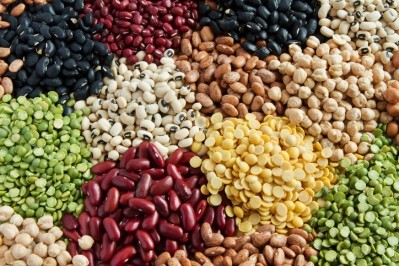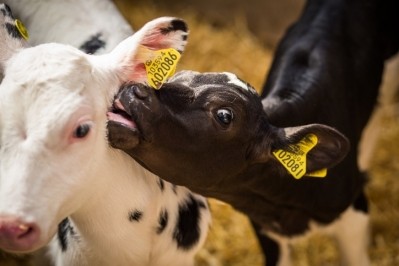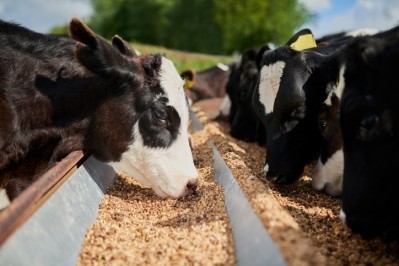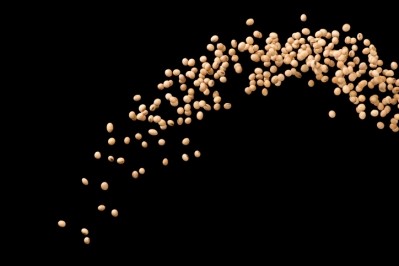special edition: feed protein innovation
Tropical legume forages may provide novel protein for dairy cow diets
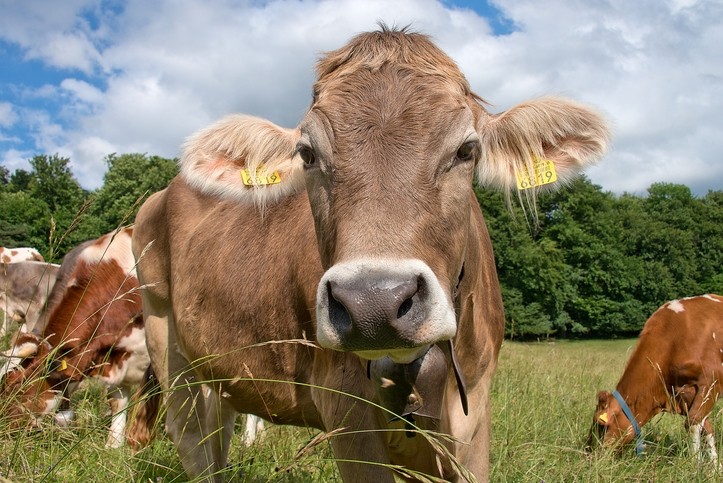
A team of researchers from the University of El Salvador and the University of Hohenheim in Germany explored the use of alternative forage legumes like jackbean as a protein replacement for soybean meal in feeds for dairy cows.
“The objectives of the current study were to investigate the effects of the supply of CP [crude protein] from forage legumes to lactating cows on feed intake, animal performance, nutrients’ apparent total tract digestibility, N [nitrogen] balance, and profitability,” the researchers said.
The group published details about its work in the journal of Animal Feed Science and Technology.
The researchers found that cows on a cowpea-hay diet had higher feed intake, while milk yield and composition were similar across a range of feeds, they said.
Nitrogen use efficiency was best when a jackbean silage diet was provided and both diets with forage legumes had better cost-benefit ratios.
“Tropical forage legumes can substitute soybean meal and sorghum silage in the diet of lactating crossbred cows while maintaining dry matter intake and milk production, and milk composition,” they said. “Using forage legumes decreases feeding costs and therefore, upon the maintenance of the same milk production level, may increase the profitability of the dairy enterprise.”
Why alt tropical forage legumes?
Adding large amounts of feed concentrate is one way used to boost milk yields on tropical dairy farms, said the researchers.
The concentrate mixes tend to be high in crude protein (CP) to supplement low protein levels in common forages, which include grass hay, cereal straw and corn or sorghum silage.
However, the protein ingredients in concentrates, such as soybean meal or cottonseed meal, can be expensive and are commonly imported, they said.
Improving protein levels in other diet ingredients could reduce the reliance on those protein ingredients.
“However, due to the different CP characteristics (i.e. crude protein fractions, degradation characteristics) that forage legumes may have compared with those of the concentrate ingredients being replaced, changes in e.g. animal performance and nutrient partitioning may be expected upon feeding tropical forage legumes to lactating cows,” the researchers said.
The degradability of soybean protein in the rumen is about 650g/kg CP, and it provides a portion of amino acids to the duodenum, they said.
An ingredient like urea brings a source of inorganic nitrogen (N) that also can be degraded by the rumen.
“Both feeds provide different scenarios of CP degradability and may serve as a guide for the understanding of the utilization of forage legumes as a source of protein in tropical dairy,” they said.
Feeding trial details
During the feeding trials, eight lactating cows in a replicated 4x4 Latin square trial were given one of four different diets for a period of 21 days before being changed to another of the trial diets, the researchers said.
Each 21-day window included 14 days of adaptation and 7 days for data collection.
The four diets varied by protein source and forage but were formulated to have a 70:30 forage to concentrate ratio while meeting the protein and metabolizable energy (ME) needs for a cow weighing 450kg and generating 11kg milk, they said.
“All diets were designed to have a CP concentration of 130 g/kg DM and an ME concentration of 8.7 MJ/kg DM."
The control diet included sorghum silage and a concentrate mix with soybeans providing the main source of crude protein, and all diets included the same amount of stargrass hay, they said.
The alternative diets used included a mixed jackbean and sorghum silage in a 40:60 ratio with a reduced level of soybean meal in the concentrate (jackbean-silage); a diet with cowpea hay replacing sorghum silage on a 45% dry matter basis and with reduced soybean meal (cowpea-hay); or a diet with sorghum silage where urea replaced a portion of the soybean meal in the concentrate (urea diet).
“The control and the urea diet served as comparison for the diets including legumes."
“Crude protein from soybean in the control was substituted by 57 and 65% by CP from jackbean silage and cowpea hay, respectively.”
Cows were weighed at the start and end of each feeding period and feed offered and refused was recorded daily, they said.
Samples of feeds, feed ingredients and feed refused were collected for analysis.
Milk samples were gathered twice daily and urine and fecal samples were taken daily from day 15 to day 20 of each trial diet period, they said. Milk was checked for fat, protein, lactose and milk urea nitrogen.
Average feed ingredient prices in El Salvador were used to calculate feed costs along with forage production costs, they said.
“Income over feed cost (IOFC) was computed by subtracting the costs of the diets from the gross income from milk production using mean milk price received during the trial."
Results
Based on forages, the cowpea hay diet had the highest CP level followed by the jackbean-sorghum silage diet and then the sorghum silage and stargrass hay diet, the researchers said.
Neutral detergent fiber was highest for the control, while acid detergent fiber was highest for the cowpea hay diet.
The concentrate-based CP was lower, by design, for both feeds with legume forages, they said.
Both legume-based diets had lower CP than the control diet as the legume forages had lower protein levels than anticipated when the diets were formulated.
“There were no differences in N secretion in milk between all dietary treatments, but the N use efficiency (in g N secreted in milk per g of N intake) tended to be higher in the jackbean-silage diet and lowest in both the control and the cowpea-hay diet,” they said. N emissions in fecal matter were higher for the legume-based feeds and lowest in the urea diet, and apparent total tract digestibility of dry matter was similar for all diets, they added.
“However, apparent total tract digestibility of CP (aCPd) clearly differed between diets with the following order: urea diet > control > cowpea-hay diet > jackbean-silage diet, they said.
Compared to the control, cows had an increased dry matter intake with the cowpea-hay feed, the researchers said. Milk production and cow body weight were similar for all diets.
Milk composition and milk fat, protein and lactose yields also tended to be similar for all the diets, they said. Cows receiving the jackbean-silage diet had reduced milk urea nitrogen levels.
“Both diets containing forage legumes had lower feed costs and resulted in a tendency for a higher benefit-cost ratio,” they said. “Even though more research is needed to better understand the characteristics of forage legumes as sources of protein, and their effects on animal performance and nitrogen excretions, these results show that jackbean silage and cowpea hay at inclusion levels between 250 and 300 g/kg dry matter have potential to substitute soybean meal in diets of crossbred cows producing 10 kg milk daily.”
Source: Animal Feed Science and Technology
Title: Effects of feeding tropical forage legumes on nutrients digestibility, nitrogen partitioning and performance of crossbred milking cows
Authors: J. Castro-Montoya, R. Gownipuram, M. Mendoza, N. Solano, F. López, U. Dickhöfer, E. Corea
DOI: doi.org/10.1016/j.anifeedsci.2018.10.017
